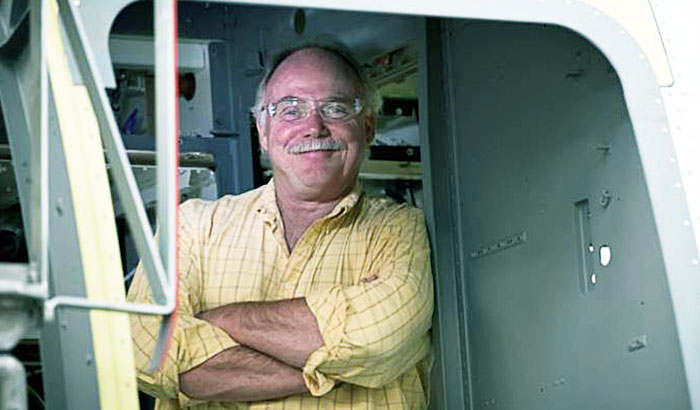Not just a paint job

Engineer Joe Finn helps lead successful efforts to develop chrome-free paints and primers for the Chinook helicopter and V-22 Osprey tiltrotor aircraft at Boeing Philadelphia. (Boeing photo)
Engineer Joe Finn has learned that reaching major environmental milestones and research breakthroughs takes commitment and a lot of patience. For example, this spring, the V-22 Osprey vertical lift aircraft became the latest Boeing military product to receive a paint primer that is free of hexavalent chromium, or chrome.
“In this research we know it’s going to take time. We make continuous progress and improvements step by step; we learn as we go,” said Finn, senior engineer in the chemical technology group at Boeing Philadelphia. Boeing and the aerospace industry began researching environmentally responsible replacements for chrome-based paints and primers in the 1990s.
The Philadelphia site is home to the V-22 and the CH-47 Chinook helicopter programs. Boeing began using a chrome-free primer on the Chinook helicopter in 2010. Since then, the new primer has been approved for other military and commercial aircraft. In May, the first V-22 used the new primer for specific sections of the fuselage.
“The footprint of chrome on an aircraft is large because there is so much metal, especially on surface areas such as the fuselage. But chrome has dozens of applications,” Finn said. Hexavalent chromium has been widely used by the aerospace industry to prevent corrosion on metal aircraft structures and parts.
Each military aircraft is manufactured under its own contract with unique customer requirements and technical specifications. Alternative materials and technologies such as chrome-free primers approved for one product cannot automatically be transferred to another aircraft. It takes extensive testing and verification of performance, Finn said.
Over the past several years, paint manufacturers have made good progress in developing options for chrome-free coatings, Finn said. Government customers, such as the U.S. Navy, also added the use of chrome-free paints and primers to their product specifications.
When an industry-developed chrome-free primer gets government approval for aerospace use, Boeing then conducts its own testing and evaluation to ensure that the material meets the company’s performance requirements and criteria. A replacement option may not be suitable for all applications, Finn said.
“We currently use chrome-free paints and primers only on aircraft sections that are easy to access and inspect. The ability of Boeing and the customer to monitor its performance is critical,” Finn said. “Then over time you can understand how well it’s doing and implement the replacements in other aircraft areas prone to corrosion.”
Finn said there also is close collaboration among programs and sites across Boeing, and research progress is widely shared. Additional replacements for chrome-based materials are likely to be approved by year-end.
The partnerships and collaboration are what Finn finds especially satisfying about his work. “Talking to people across the company about these kinds of technical issues is very exciting,” Finn said.
“Boeing really cares about the integrity of its products, and that includes safety and the environment. I think we’re building the best aircraft in the world.”

